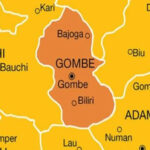According to the National Emergency Management Agency (NEMA), this year’s flood disaster has ravaged 33 states out of the 36 states and the Federal Capital Territory of the federation.
Data from the Federal Ministry of Humanitarian Affairs, Disaster Management and Social Development put the number of deaths at 612 persons, the number of injured at 2,776 while persons displaced stood at 1.4 million with 90,000 and 70,566 homes and hectares of land respectively destroyed.
- Flood displaced 90% of traditional rulers in our state – Bayelsa monarchs
- 13 people burnt to death in Kano auto crash
However, in line with long held tradition the nation conveniently forgets that livestock and wildlife also drown in flood. The livestock industry suffers setbacks at every level of its value chain every time such a disaster strikes. Livestock is too precious to our society to be treated with such benign neglect.
Flood has destroyed vast arable and rangeland that constitute our largest ecosystem that supports rural livelihood system which guarantees food security of hundreds of millions of livestock farmers and rural families who provide livestock derived foods (meat, dairy, eggs) not only for themselves but also for millions of others.
Ruminants convert often sparse and short-lived vegetation, crop residue and other non-edible biomass generated in the production of crops and tubers for human diet into high-quality food for the populace contributing to national nutrition and food security.
To many rural population, this may be the only regularly available source of variety of essential nutrients necessary for healthy growth of children, the nutritional needs of pregnant and lactating mothers, sick and the old.
In the current flood, thousands of poultry, pigs, small ruminants, cows, and wildlife drown. In addition ranches, kraals, stored feeds and sown pasture were destroyed. The flood also caused many animal health challenges through the circulation of dangerous pathogens that made many animals that survived the flood’s initial surge become sick, dehydrated, suffer from food shortages and starve to death.
Majority of small-scale farmers practice mixed farming so the additional roles played by livestock in rural livelihood system include being the inflation-free safe money-boxes (piggy banks).
Livestock is one of the most popular private assets owned by women and a good tool for gender mainstreaming. Small livestock are fungible assets that can be liquidated easily on market days and are commonly referred to as ATMs that neither require BVN nor power network to dispense cash.
This efficient unique banking system that survived the currency redesign of 1984 unscratched has suffered fatal bank run due to flood and needs urgent life line support. Therefore, unless livestock-owning flood victims are assisted, the loss of livestock would lead households into abject poverty that would take a long time to overcome. This is because rebuilding livestock asset base, unlike annual cropping, takes time. Unfortunately, this extremely serious livelihood situation is least understood and does not appear to be part of the ongoing conversation on necessary and immediate assistance and compensations to flood victims.
In general, the livestock sector is facing several challenges of production, animal heath, marketing, conflicts arising from natural resources utilisation and climate change that require well-thought actions.
In addition, the sector also suffers from serious bad public relations caused by social media inundated with venomous comments because of the criminal activities of some bad elements among livestock producers.
Government is now promoting ranching as panacea for these challenges. Unfortunately, the destruction of ranches is casting doubt on the suitability of this technology at least in some states of the federation. This is because many mobile pastoral producers ran to higher grounds with their stock to avoid flood. A strategy currently unavailable to many ranchers because of lack early warning system and designated high grounds to move animals to.
The timeliness, volume and mode of assistance government renders to these early adoptees of modern ranching may determine the future of ranching in Nigeria.
In disaster management situation, of course, government’s priority is to provide assistance and aid to humans first. The country’s National Contingency Plan (2019-2021) was developed from these perspectives. Its objective is to provide basis for coordination of humanitarian response in the event of catastrophic/major disaster and unfortunately does not capture the peculiar needs of livestock.
From livestock perspective, emergency interventions aim is to restore livelihood through the provision of rapid assistance to quickly rebuild the livestock assets base. The intervention should start with the provision of feeds, clean water and medicament before it moves to rebuilding infrastructure and restocking.
The National Contingency Plan (2019-2021) in its current form is deficient and cannot cater for the livestock sector that supports the livelihood of millions of Nigeria. The Plan needs to urgently incorporate the lessons learnt from this current flood situation and that of 2012 and develop a more systematic strategy for livestock emergency interventions with a robust livestock-focused Early Warning and Response System.
Dr Maina is a former Director of Federal Department of Livestock and can be reached via [email protected]

 Join Daily Trust WhatsApp Community For Quick Access To News and Happenings Around You.
Join Daily Trust WhatsApp Community For Quick Access To News and Happenings Around You.

